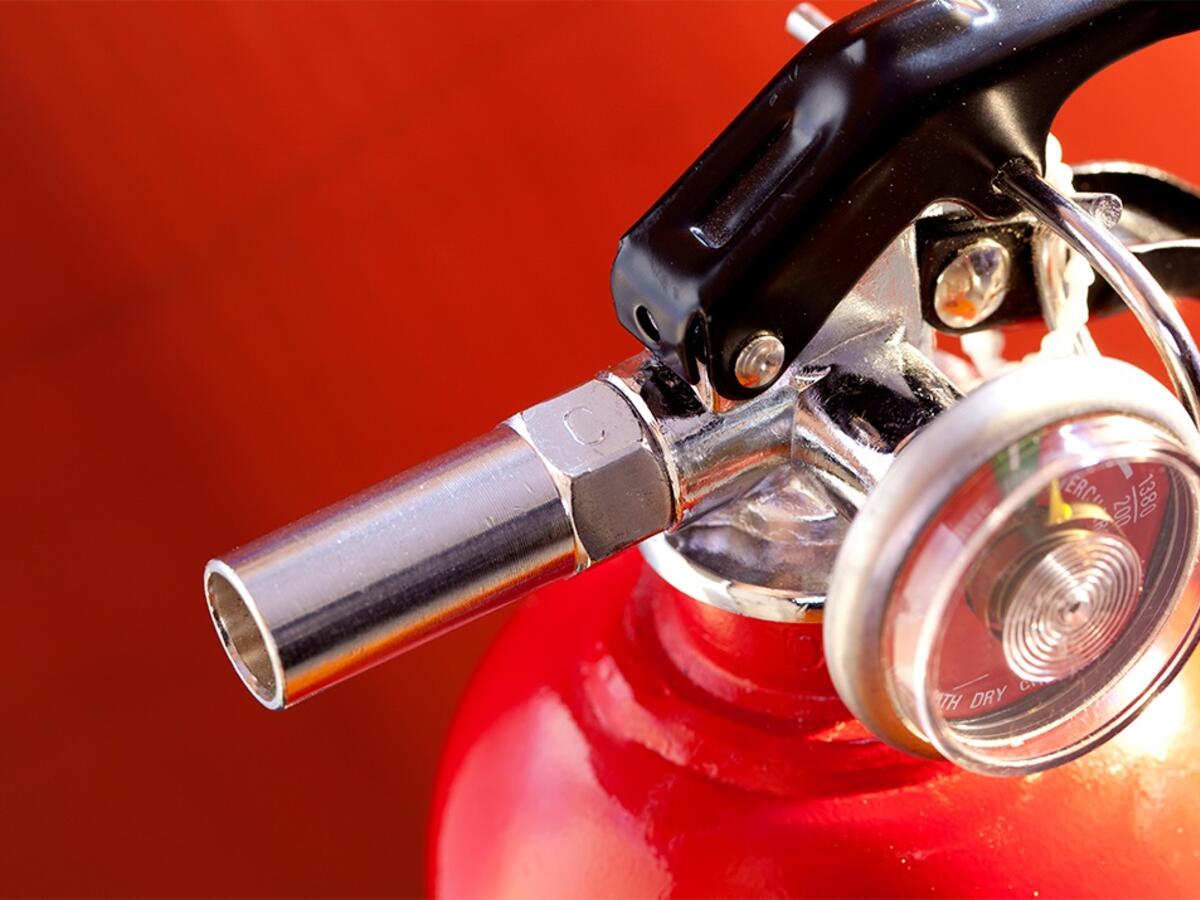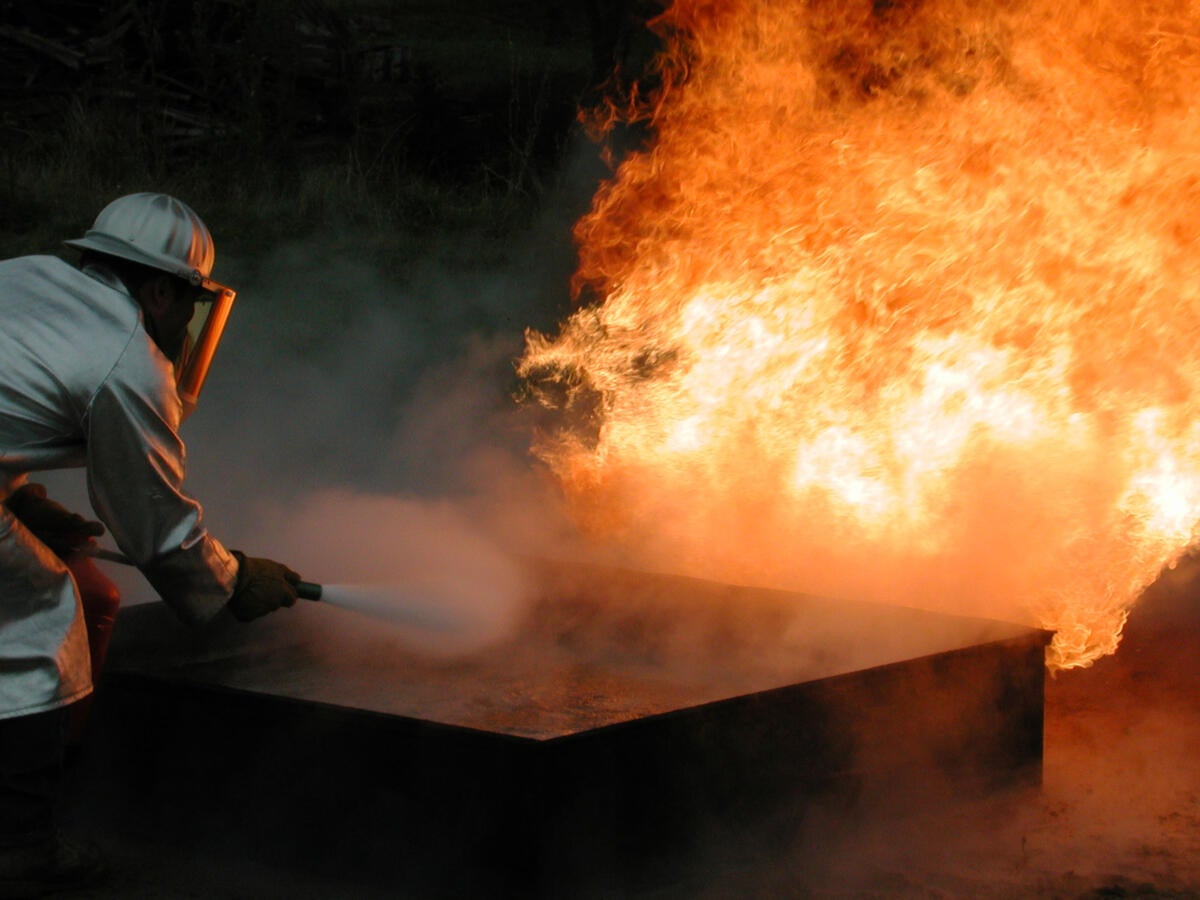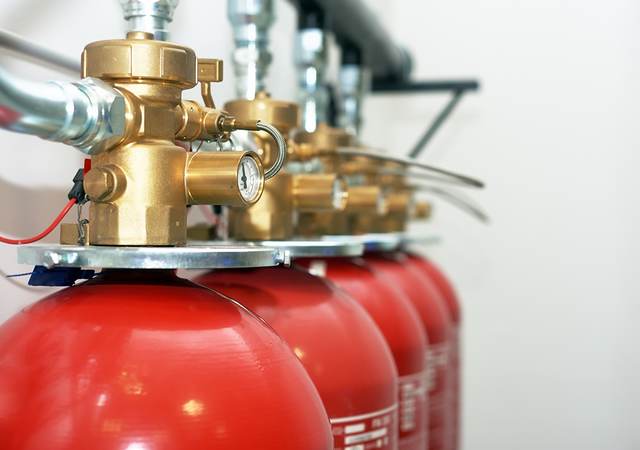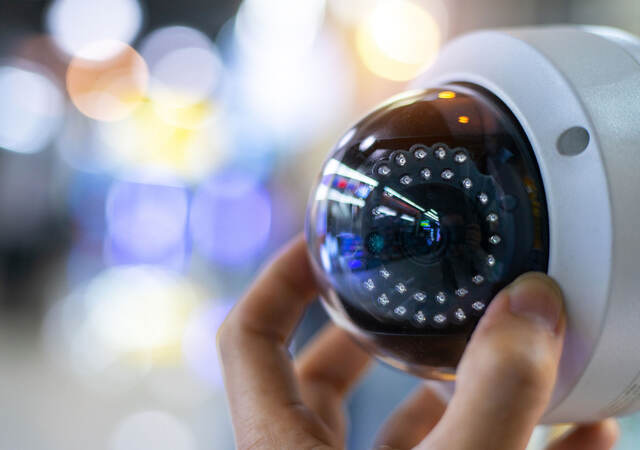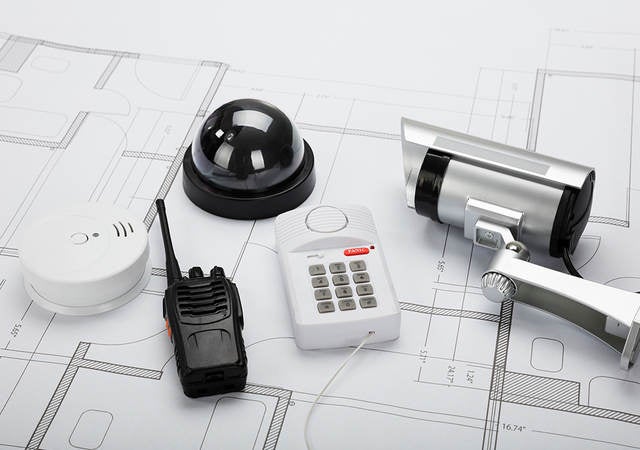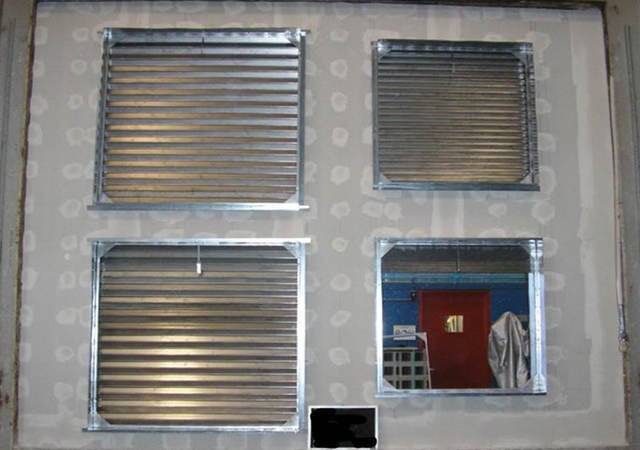The importance of fire extinguisher testing and certification
Around the world, the reputation of the UL Mark provides confidence to manufacturers that their fire extinguishers, components and agents meet the highest standards of safety and performance.
Some might ask: What are the testing methods for fire protection systems? We use full-scale flammable liquid and wood fire tests to determine the fire extinguishing potential of each fire extinguishing system. In this effort, our fire safety professionals examine mechanical components such as cylinders, valves, gauges, handles, nozzles, siphon tubes, labels and extinguishing agents to certify their compliance with applicable requirements.
We also evaluate fire extinguishing capability, operation, discharge duration, temperature cycling, vibration, hydrostatic pressure and servicing. There are harmonized standards between the U.S. and Canada, which simplifies the testing and certification process.
Certified fire extinguishers and the UL Mark
We perform fire suppression tests and offer certification to all applicable standards pertaining to fire extinguishing systems, specifically for carbon dioxide, dry chemical, foam, halocarbon clean agent and water-type fire extinguisher. In the U.S. and Canada, extinguishers are intended to be selected, installed, inspected, maintained and tested in accordance with National Fire Protection Association (NFPA) 10, standard for Portable Fire Extinguishers.
Fire extinguishers that comply with Brazil’s Portaria 486 and ABNT NBR 15808 are eligible to use the Brazilian-recognized conformity mark — the INMETRO Mark — in conjunction with the UL-BR Mark for Brazil.
Fire extinguishers as well as fire extinguishing system components and agents that carry the UL Mark are widely recognized as meeting the applicable standards for safety and performance.
Testing and certification to standards for fire extinguishers
UL Solutions tests and certifies to the current editions of the following Standards:
- ANSI/UL 8 CAN/ULC-S554, the Standard for Water-Based Agent Fire Extinguishers
- ANSI/UL 154 CAN/ULC-S503, the Standard for Carbon- Dioxide Fire Extinguishers
- ANSI/UL 299 CAN/ULC-S504, the Standard for Dry Chemical Fire Extinguishers
- ANSI/UL 626 CAN/ULC-S507, the Standard for Water Fire Extinguishers
- ANSI/UL 2129, CAN/ULC-S566, the Standard for Halocarbon Clean Agent Extinguishers
Fire performance test Standard
- ANSI/UL 711 CAN/ULC-S508, the Standard for Rating and Fire Testing of Fire Extinguishers
Installation and maintenance standard
- NFPA 10 Standard for Installing and Maintaining Portable Fire Extinguishers
UL Solutions tests other elements within fire extinguishers
Other UL Certified Components for fire extinguishers:
| System Component | To search database |
| Cylinder – Fire Extinguisher Cylinder | “GAVH2” Cylinders for Extinguishers – Component “GAVH8” Cylinders for Extinguishers Certified for Canada - Component |
| Seals and Gaskets- Used for seals that are exposed to agent in the storage container | “GMCQ2” Seal Rings for Fire Extinguishers and Extinguishing Systems “GBMS2” Tamper Seals for Fire Extinguishers – Component “GBMS8” Tamper Seals for Fire Extinguishers Certified for Canada |
| Extinguishing Agents- Agent utilized in UL Listed Extinguishers | “GMQC2” Agents for Water-Based Agent Fire Extinguishers – Component “GMQC8” Agents for Water-Based Agent Fire Extinguishers Certified for Canada – Component “GARZ2” Clean Agents for Fire Extinguishers and Extinguishing System Units “GARZ8” Clean Agents for Fire Extinguishers and Extinguishing System Units Certified for Canada |
| Hose Assemblies - Hose Assemblies for Fire Extinguishers | “GLUX2” Hose Assemblies for Fire Extinguishers – Component “GLUX8” Hose Assemblies for Fire Extinguishers Certified for Canada – Component |
| Pressure Gauges for Extinguishers | “QUWR2” Pressure Gauges for Extinguishers and Extinguishing System Units “QUWR8” Pressure Gauges for Extinguishers and Extinguishing System Units Certified for Canada |
Why use UL Solutions for fire extinguisher testing and certification
More than 90 years ago, we developed the fire suppression inspection standards that guide the fire extinguisher development process today. As new technologies emerge, you can work with our engineers to address design and performance challenges. By matching product components to existing standards and alerting us to specific technology enhancements, you can help streamline the fire suppression system inspection testing and certification process, control testing costs and accelerate time to market.
You can also work with our engineers to address specific performance issues that arise with products in the field. This collaboration helps provide products that meet the highest industry standards.
Get in touch
Have questions, need specifics? Let's get this conversation started.

